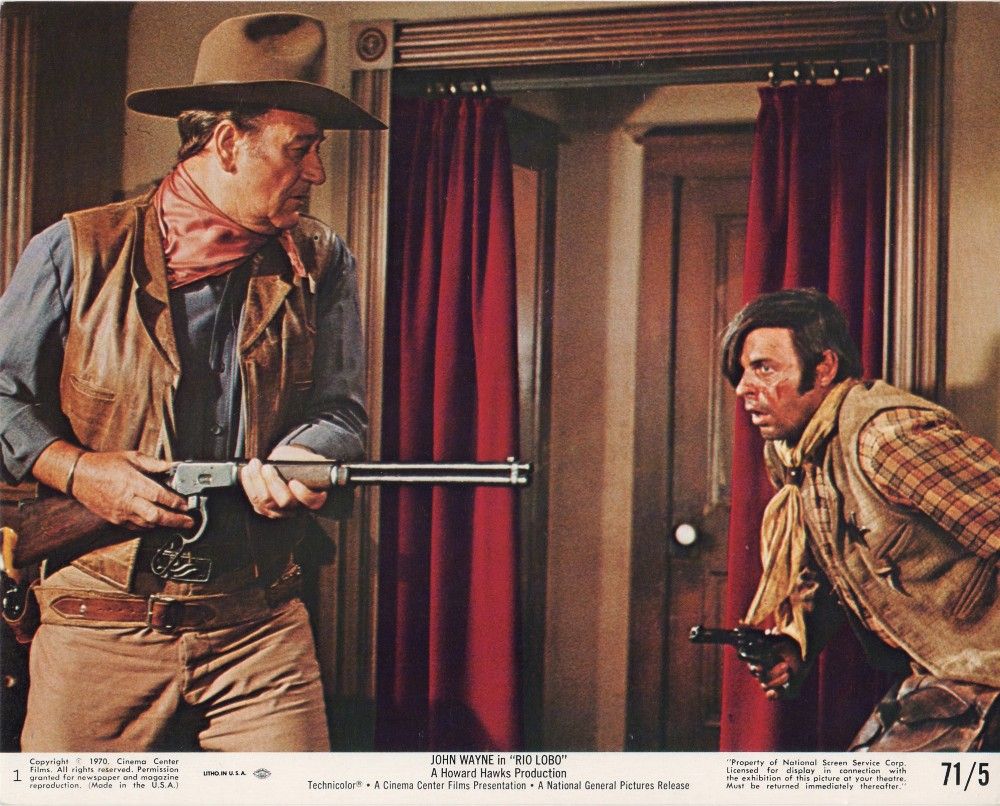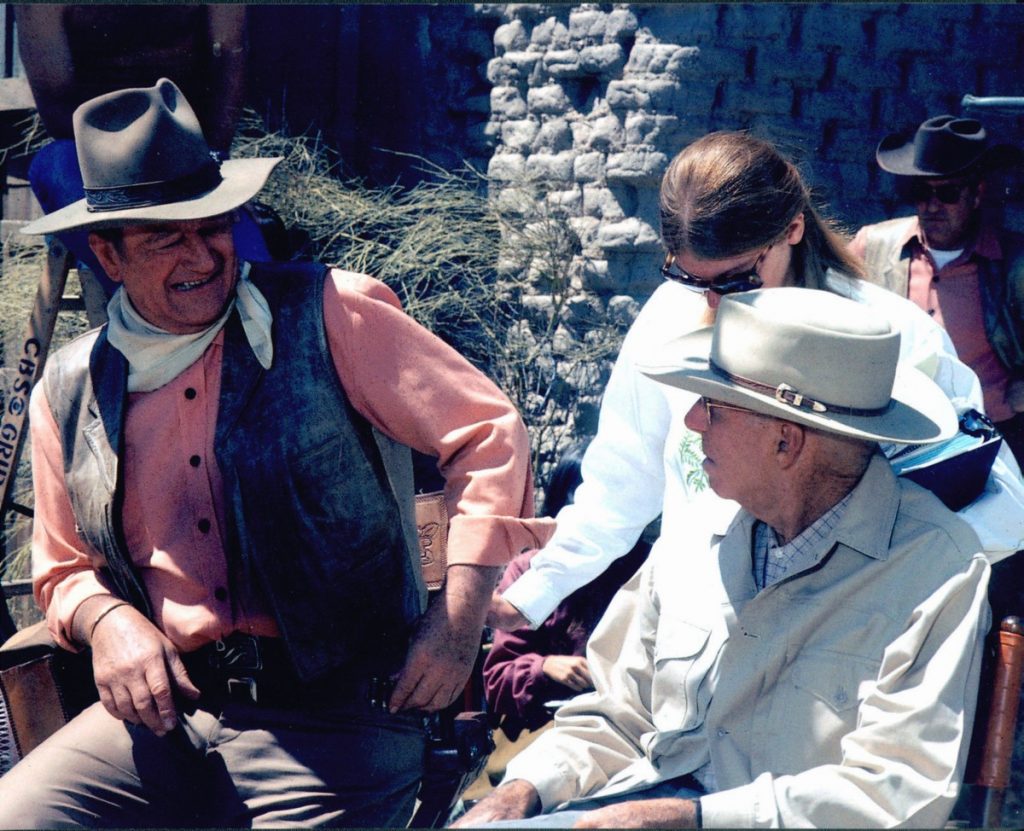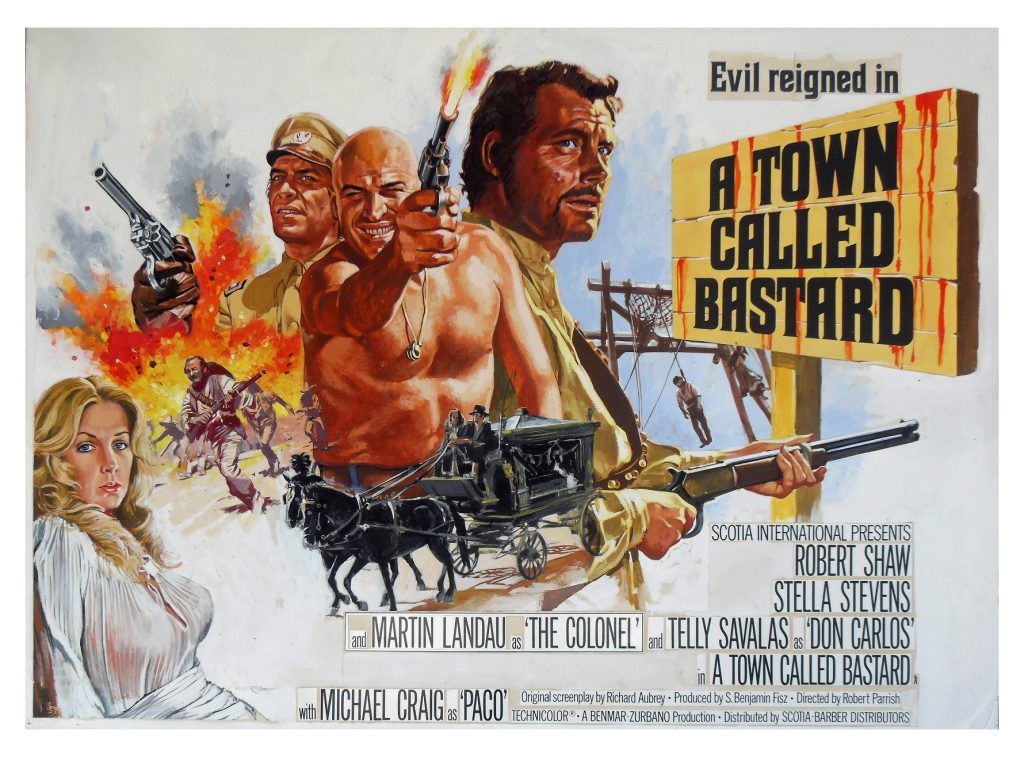Each Monday, I share reviews of Westerns I’m studying to prepare for making 12 Westerns in 12 Months during 2020. I am watching these films not from an audience perspective but as a filmmaker, as a student of the genre.
Week Twenty Four: Rio Lobo & A Town Called Bastard
Rio Lobo

Well, I’ve finally done it. I’ve seen the last film by director Howard Hawks, one of my favorites. Why did I avoid it for so long? Because of the awful things I heard about it. Because I didn’t want to cringe while watching one of my film heroes direct for the last time.
Some of those “awful things” are certainly true but they didn’t seem so when I started Rio Lobo the other night. The first thirty minutes is actually quite good. Hawks stages the train robbery with thrilling effect. I thought, “This doesn’t feel like the reported re-do of Rio Bravo and El Dorado.” Then we move past the thirty minute mark and I began to see what all the talk was about…
I think what Hawks really lost sight of in these later films, even more than the plot, was casting. Jorge Rivero and Jennifer O’Neill deliver an incredible lesson on how not to act in nearly every scene. They’re basically plastic, nothing they do feels authentic or even real in the fabricated Hollywood sense. It’s an embarrassing choice and I don’t know why Hawks did it. If he was backed into a corner on casting, he shouldn’t have made the movie. Some of these poor actor choices continue with the heavies (who don’t pose any threat to our good guys) and the glamorous women (who just feel like eye candy and don’t stand out from one another at all). The women in this feel like they belong in a bad Bond film, not a Western; interesting enough, Hawks at one time wanted to direct a film in the 007 series.
I suffered through the middle of this film and then it finds redeeming moments closer to the end. For one, we get less of Rivero and the women as the narrative unfolds. Jack Elam shows up and though he is not used as effectively as Walter Brennan in Rio Bravo, his performance is difficult not to enjoy. What I particularly liked were some undeveloped dark elements that Hawks introduces: the “let him burn” moment, the sheriff cutting the girl’s face. These feel like a new direction for Hawks but he sort of just glazes over them. If perhaps he had let himself explore a more cynical, dark version of these events, it might have given us something really unique for the genre and the director’s body of work.

The finale isn’t bad. It does feel too much like Rio Bravo but I like some of the ways that he subverts elements of that film’s action sequence such as giving the dynamite to the bad guys this time and changing what happens to it. I also like the outcome for the sheriff but something feels too lightweight as the final seconds of Rio Lobo come to a close. Again, Hawks could have done something darker here between Wayne and the wounded woman but he just went for the one liner.
I have been reading a book called Dangerous Friends that gets into the writer Peter Viertel’s experiences with Huston and Hemingway. Hawks comes up several times in the book. The writer encounters the director’s ex-wife who apparently relays that Hawks was a “great pillar of nothing”. This statement shocked me and the more I thought about it, I found it to be ridiculous. No man who can direct Red River, Rio Bravo, Only Angels Have Wings, His Girl Friday, and so many other great films could be a pillar of nothing. That’s not a fluke. It’s just unfortunate that at the end of his career, he was losing that sharpness that made him so good only a few years before with Rio Bravo and even Hatari.
I’ll still take Rio Lobo over El Dorado any day.
Seen on Amazon Prime.
A Town Called Bastard

It is hard to judge this film fairly since the copy I watched on Amazon Prime is in terrible shape. Clearly, it’s presented in the wrong aspect ratio. The audio is also in bad shape. I had to turn on closed captions which I hate to do and even those are poorly done…
Nevertheless, the film was curious to watch. It begins with a bang and for the first fifteen minutes, I thought I was watching a down-and-dirty underrated gem. Savalas is especially good in this first section, energizing the picture, a great counterpart for Robert Shaw’s quiet “protagonist”. Once he departs from the picture, it simultaneously loses it’s drive and becomes incredibly muddled.
The question of “Who is Agila?” takes over the narrative. It’s hard to get behind this key plot point when the script seems so all over the place. I suspect that this cut on Amazon may also be missing scenes, unless the original was horribly put together in the first place. I hope not.
Even in this second part of the movie, there are some redeeming moments. The extended flashback is strong and the dance number with “The Battle of New Orleans” is very odd but also one of the film’s highlights. Once I reached the end of the picture, I wondered if all of its content would have resonated more if I’d watched a better copy. Who knows. My original intention for seeing this film was Stella Stevens. I’m considering asking her to be our special guest at my second annual Western film festival. I wanted to see what her other Western work looked like. I hope the Blu-ray copy of this is a better representation.
Seen on Amazon Prime.
Support our 12 Westerns project by donating five dollars or more on our GoFundMe fundraiser.
-Travis Mills



A Town Called Bastard isn’t on Amazon Prime. Apparently they removed it?